June 27, 2024 By Amber raza 7 minutes read

Impact-Site-Verification: 40cf13f8-deac-49a1-b73a-9b8a75138f16
Lean Manufacturing is about delivering value to the customer. This means providing a product or service that meets customer needs without unnecessary processes or resources. Think of it as a way to do more with less—less time, less effort, and less waste.
Originating from the Toyota Production System (TPS) in Japan, Lean Manufacturing has become a global standard in the industry, influencing how companies worldwide approach their production processes.
The importance of Lean Manufacturing in today’s world cannot be overstated. As companies strive to stay competitive, the ability to produce high-quality products efficiently is key to success.
In this article, we’ll explore the principles and practices of Lean Manufacturing and how they can be applied to real-world scenarios. This guide will provide you with the insights you need to succeed.
Lean Manufacturing is a methodology that focuses on minimizing waste within manufacturing systems while simultaneously maximizing productivity.
Lean Manufacturing is based on five core principles, which guide the entire process of eliminating waste and maximizing value. Let’s break down these principles to see how they work together to create a more efficient manufacturing process.
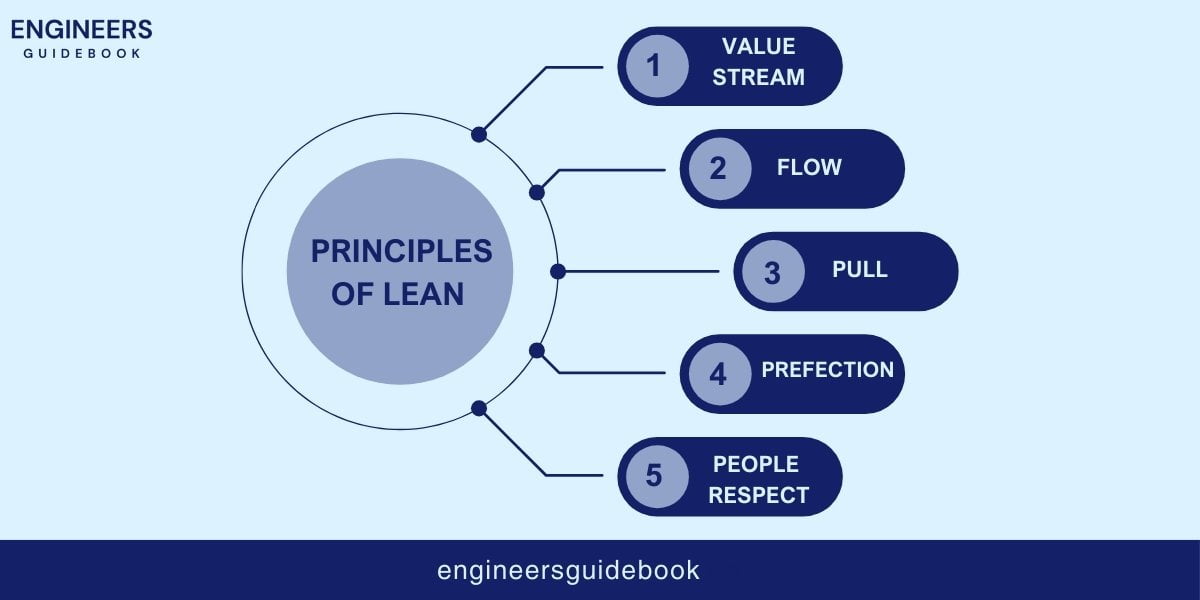
The first step in Lean Manufacturing is understanding what value means from the customer’s perspective. It’s not about what the company thinks is valuable but what the customer is willing to pay for.
This could be a product’s functionality, quality, or even the speed of delivery. Once the value is defined, the next step is to identify the value stream, which is the series of steps that take a product from raw material to the customer’s hands.
Mapping out the value stream allows companies to see where value is created and, more importantly, where waste occurs. By identifying and eliminating these non-value-adding activities, companies can streamline their processes and focus more on what truly matters to the customer.
Once the value stream is mapped out, the goal is to create a smooth flow of production. In an ideal Lean system, work moves seamlessly from one step to the next without delays or bottlenecks. This might involve rearranging workstations, reducing batch sizes, or implementing new technologies to keep things moving efficiently.
A continuous flow helps in reducing lead times and ensures that products are delivered to customers faster. It also minimizes the amount of work-in-progress inventory, which ties up capital and space. By focusing on flow, companies can increase their overall efficiency and responsiveness to customer demands.
The pull principle is closely related to Just-in-Time (JIT) production. Rather than pushing products through the manufacturing process based on forecasts or schedules, pull systems produce items only in response to actual customer demand. This reduces the risk of overproduction, which is a major form of waste in manufacturing.
In a pull system, each step in the production process is triggered by the demand from the next step, starting with the customer. This approach reduces waste and aligns production more closely with customer needs, leading to higher satisfaction and fewer excess inventories.
Lean Manufacturing is not a one-time project; it’s an ongoing journey toward perfection. Continuous improvement, or “Kaizen,” is the practice of constantly seeking ways to improve processes, reduce waste, and increase value. This principle emphasizes that there is always room for improvement, no matter how efficient a process may seem.
Kaizen involves everyone in the organization, from top management to frontline workers, in identifying opportunities for improvement.
The final core principle of Lean Manufacturing is respect for people. This principle recognizes that employees are the most valuable resource in any organization. Lean is not just about tools and processes; it’s also about empowering people to contribute to the organization’s success.
Respect for people involves creating an environment where employees are encouraged to share their ideas, take ownership of their work, and continuously learn and grow. By valuing and respecting the people who work within the system, companies can build a strong, motivated workforce that is essential for sustaining Lean initiatives.
Lean Manufacturing is more than just a set of principles; it’s a practical approach that relies on specific tools and techniques to identify and eliminate waste, improve processes, and increase efficiency.
Value Stream Mapping (VSM) is a critical tool in Lean Manufacturing that helps visualize the flow of materials and information through the production process. By mapping out the entire value stream, companies can see where value is added and where waste occurs.
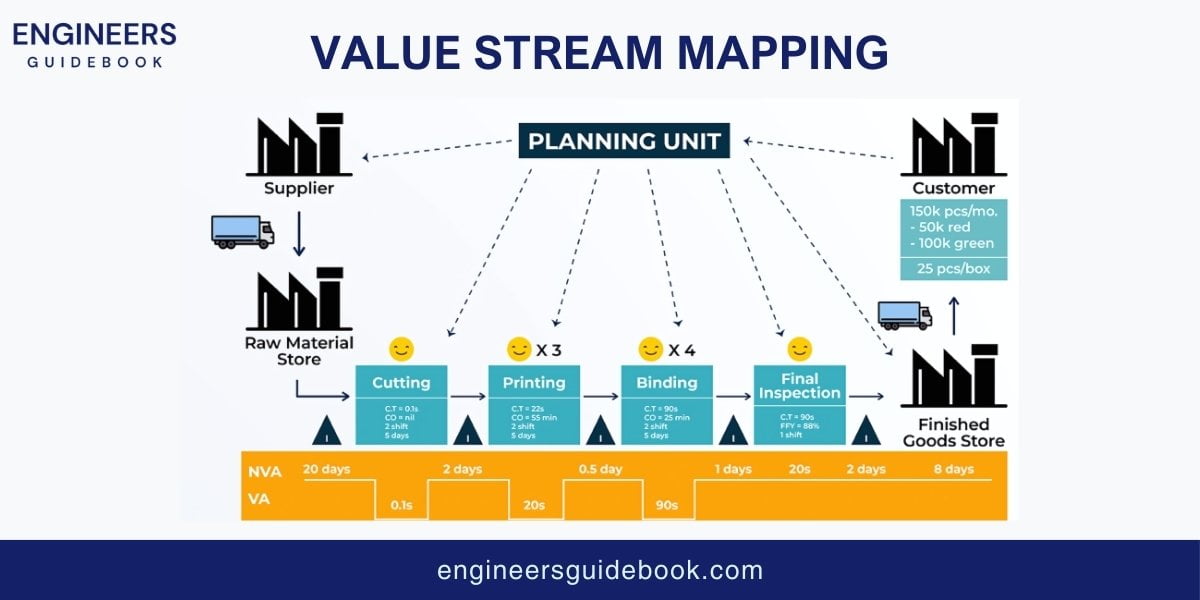
This visual representation makes it easier to identify bottlenecks, redundancies, and other inefficiencies that may not be obvious at first glance.
The process of creating a VSM involves several steps:

The 5S methodology is a foundational Lean tool designed to improve workplace organization and standardization. The 5S stands for:
Read More: What is 5S methodology? The ultimate 5s guide
Kaizen, meaning “continuous improvement” in Japanese, is a core principle of Lean Manufacturing and a powerful tool for driving incremental process changes.
Rather than focusing on large-scale changes, Kaizen emphasizes small, continuous improvements that, over time, lead to significant gains in efficiency and quality.
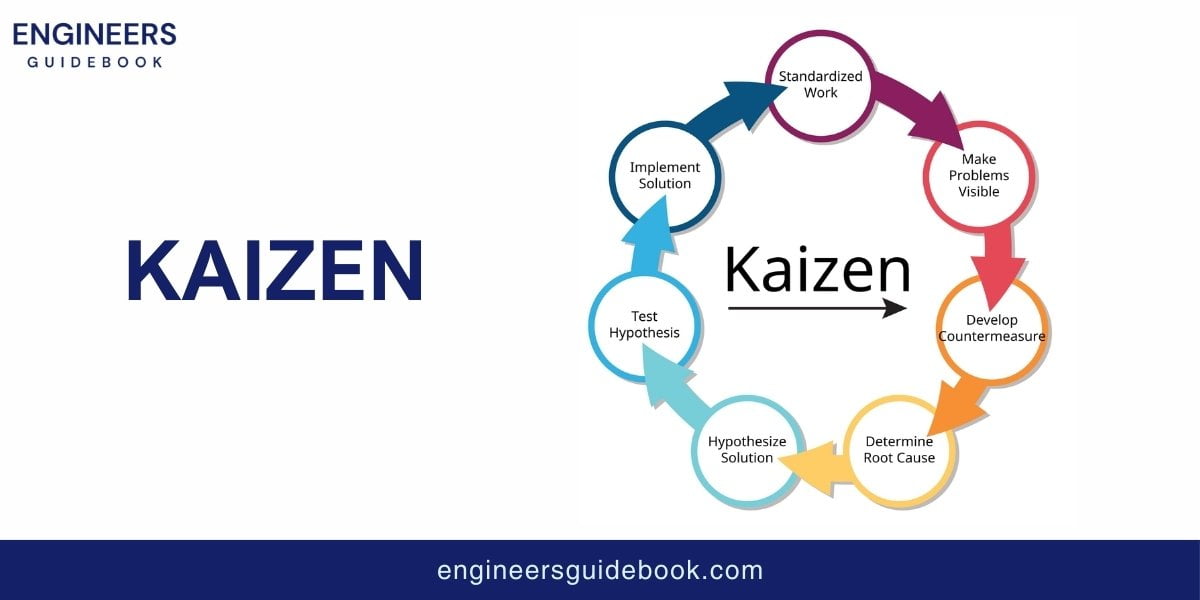
Kaizen activities typically involve:
Kanban is a visual management tool used to control the flow of work and inventory within a Lean system. Originating from Toyota’s manufacturing operations, Kanban uses cards or digital boards to signal when more materials or products are needed, helping to manage production based on actual demand rather than forecasts.
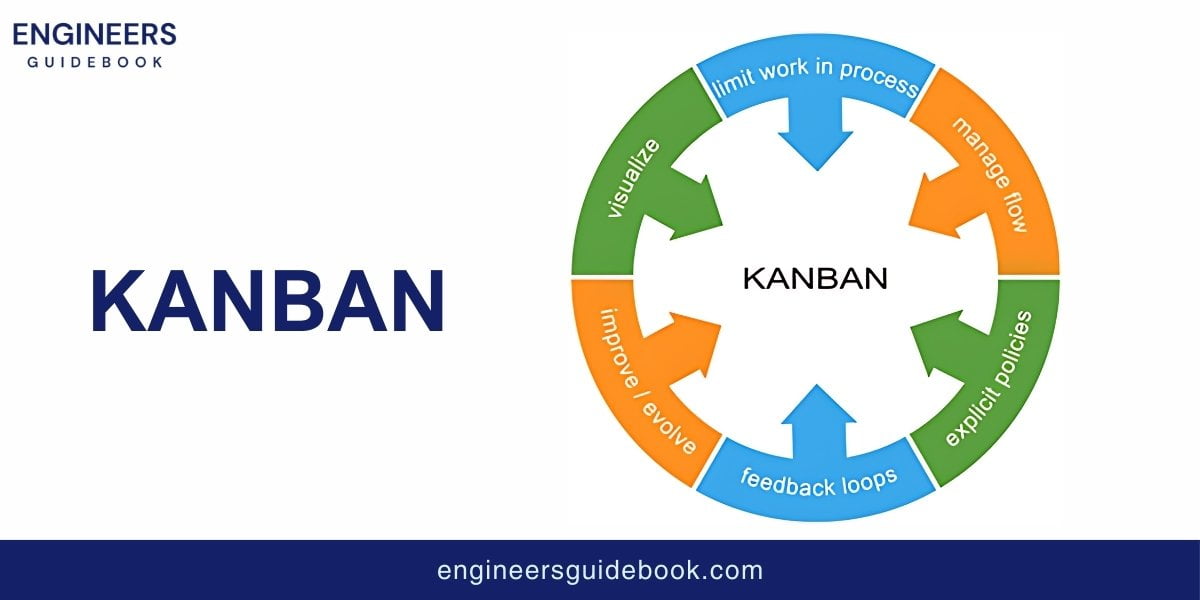
The basic steps of implementing Kanban include:
Poka-Yoke, or mistake-proofing, is a Lean tool designed to prevent errors before they occur. The idea is to create processes or devices that automatically detect and correct mistakes, or better yet, prevent them from happening in the first place.
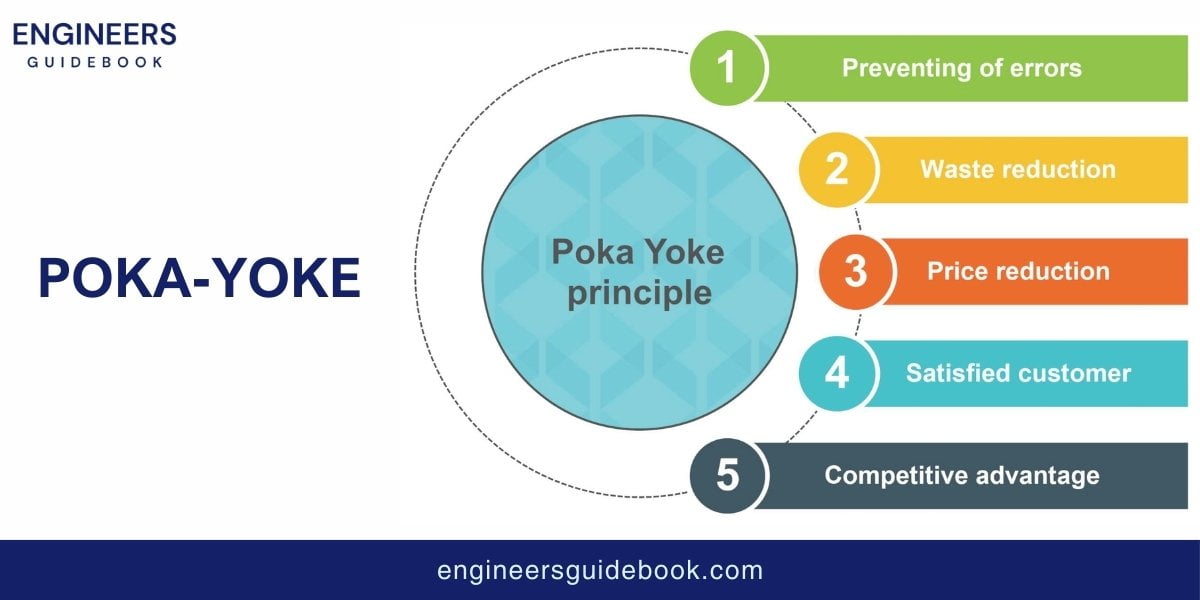
Common examples of Poka-Yoke include:
Six Sigma is a data-driven methodology that aims to eliminate defects and improve quality by reducing process variation. While not originally part of Lean Manufacturing, Six Sigma has been integrated into many Lean initiatives due to its effectiveness in improving process precision.
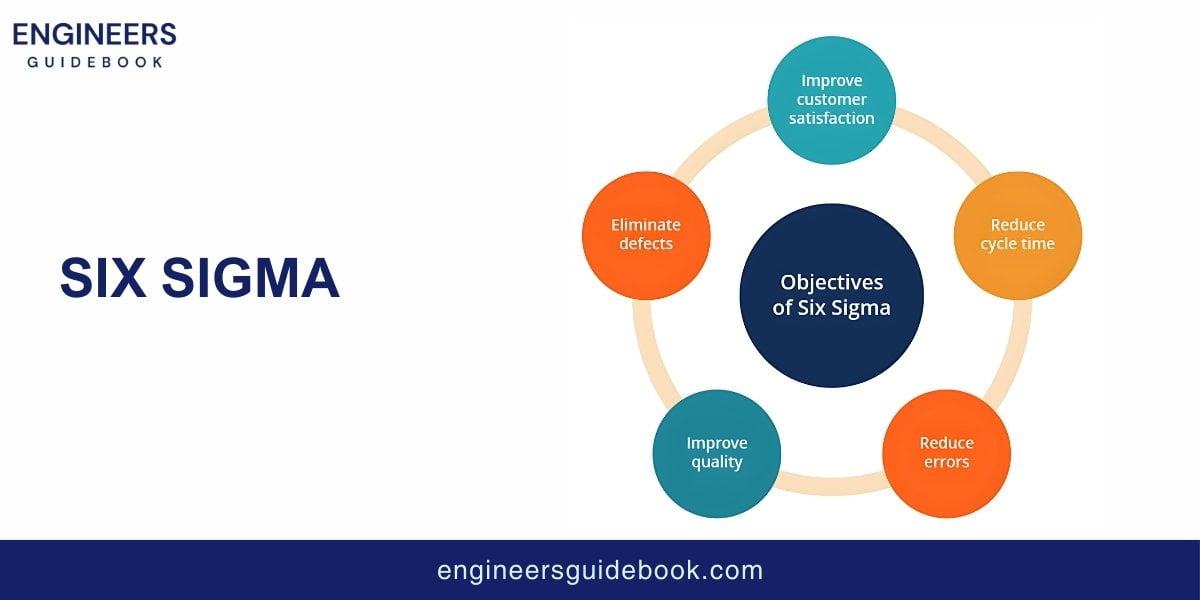
The Six Sigma process is typically structured around the DMAIC framework:
Just-In-Time (JIT) is a Lean tool that aims to produce and deliver products just as they are needed, reducing inventory levels and minimizing waste. The key idea is to synchronize production with customer demand so that materials are only ordered and products are only made when there is a real need.
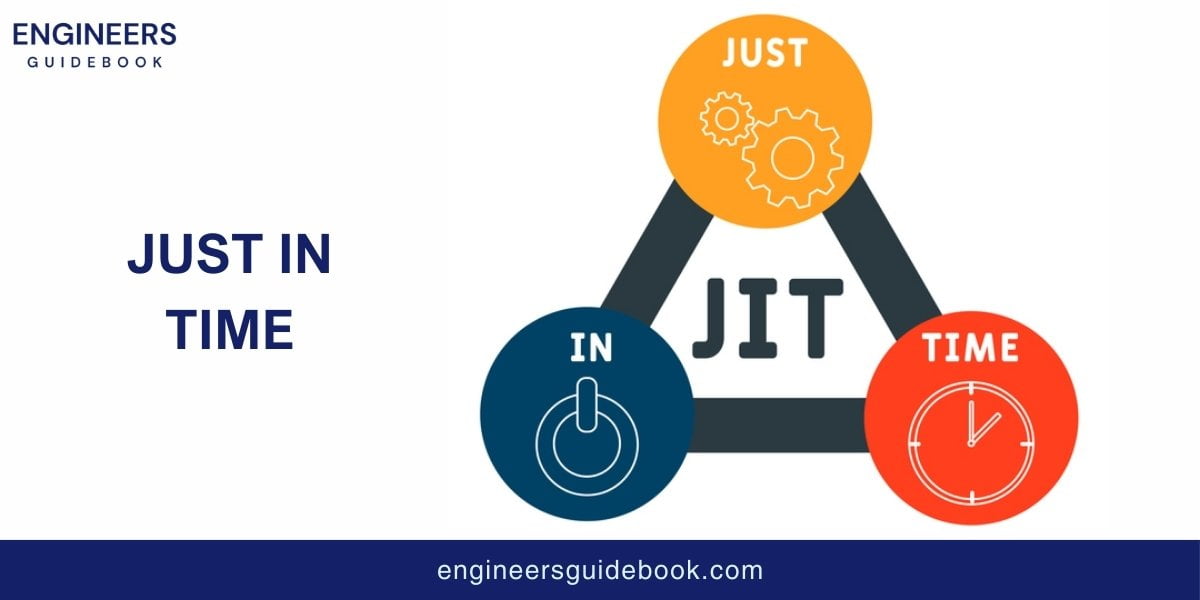
Read More: Just In Time (JIT): A Comprehensive Guide for Engineers
Implementing JIT involves:
Total Productive Maintenance (TPM) is a Lean tool focused on maximizing equipment effectiveness through proactive and preventive maintenance. The goal is to keep machines running smoothly and efficiently, minimize downtime, and ensure high-quality production.
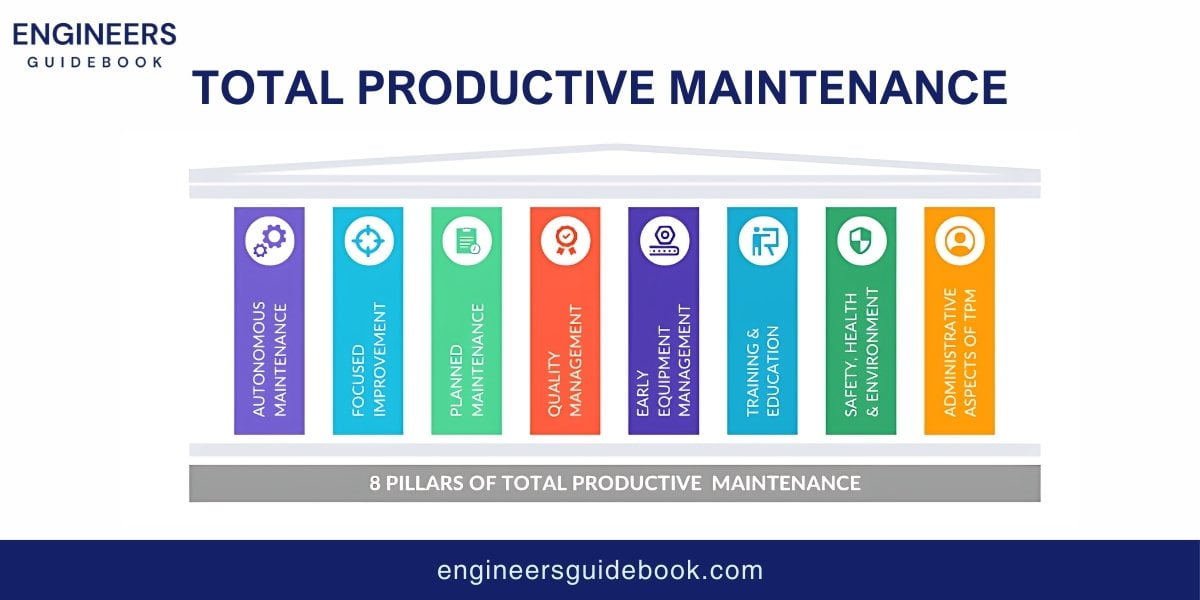
TPM involves:
Implementing Lean Manufacturing in an organization requires a strategic approach beyond simply applying tools and techniques. It involves a cultural shift, commitment from all levels of the organization, and a clear roadmap to guide the transformation.
The journey to Lean Manufacturing begins with a clear and well-defined roadmap. This roadmap outlines the steps to transition from the current state to a Lean organization.
Scale and Sustain: Once the pilot is successful, gradually expand Lean implementation across the organization. Continuously monitor progress, provide ongoing training, and encourage a culture of continuous improvement to sustain Lean practices over the long term.
One critical factor for successful Lean implementation is the development of Lean capabilities within the workforce.
Implementing Lean Manufacturing often requires significant changes to existing processes and workflows, which can lead to employee resistance.
Lean Manufacturing isn’t just for the automotive industry where it was born; its principles and practices have been adapted and successfully implemented in various industries. Each industry has unique challenges, but the core concepts of Lean can be tailored to meet specific needs.
The automotive industry is where Lean Manufacturing first took root, with Toyota leading the way through the Toyota Production System (TPS).
Toyota’s approach emphasizes waste reduction, continuous improvement (Kaizen), and respect for people. TPS has led to significant cost reductions, higher-quality vehicles, and more efficient production processes. The principles of TPS have been adopted by automakers worldwide, leading to a revolution in car manufacturing.
Electronics manufacturers, such as Intel and Samsung, have embraced Lean to streamline their production processes. By focusing on reducing cycle times and improving product quality, these companies have managed to keep up with the high market demands while minimizing costs.
In aerospace manufacturing, even the smallest defect can have significant consequences. Lean tools like Poka-Yoke (mistake-proofing) and Six Sigma are used to ensure that processes are error-free and that the highest quality standards are maintained.
The aerospace industry relies on a complex global supply chain. Lean principles are applied to streamline supply chain management, reducing lead times and ensuring that parts and materials are available when needed.
Lean tools like 5S and Value Stream Mapping (VSM) organize hospital workflows, reduce patient waiting times, and improve the overall quality of care. For example, Virginia Mason Medical Center in Seattle implemented Lean principles to reduce patient wait times and improve safety, resulting in better patient outcomes.
To ensure that Lean Manufacturing efforts are effective, it’s crucial to measure performance consistently and accurately. By tracking key metrics, organizations can gauge the success of their Lean initiatives, identify areas for further improvement, and maintain momentum in their continuous improvement journey.
As industries continue to evolve and new technologies emerge, the principles of Lean Manufacturing are being adapted and integrated with modern advancements.
Adapting Lean to Global Supply Chains: Lean principles can be applied to optimize global supply chains by reducing lead times, minimizing inventory, and improving coordination between suppliers and manufacturers. Techniques like Just-In-Time (JIT) and Kanban can help synchronize production across multiple locations, ensuring that materials and products move efficiently through the supply chain.
Dealing with Global Challenges: Lean Manufacturing must adapt to global challenges such as fluctuating trade policies, environmental regulations, and varying labor standards. Companies need to be agile and flexible, using Lean principles to respond quickly to changes in the global landscape while maintaining efficiency and quality.
Sustainability and Lean: As sustainability becomes a critical concern for businesses worldwide, Lean Manufacturing’s focus on waste reduction aligns well with environmental goals. By eliminating waste, reducing energy consumption, and optimizing resource use, Lean can contribute to more sustainable manufacturing practices.
Lean Manufacturing is not just a set of tools or a methodology—it’s a mindset that drives continuous improvement and efficiency in every aspect of production. By focusing on eliminating waste, enhancing value, and empowering employees, Lean principles have transformed industries across the globe, from automotive to healthcare and beyond.
As we look to the future, the integration of Lean Manufacturing with advanced technologies like IoT, AI, and automation presents new opportunities to further refine processes and improve outcomes. Yet, even as these technologies evolve, the core principles of Lean remain as relevant as ever. They provide a strong foundation that ensures businesses can adapt to changing environments while maintaining competitiveness and sustainability.
Lean offers a proven framework for achieving excellence. By embracing Lean, organizations can not only survive but thrive in the fast-paced, ever-changing world of modern manufacturing.

Amber Raza, who earned her PhD in Electrical Engineering from the University of California, Berkeley, is an expert in wireless communication systems. Her innovative research in 5G technology is paving the way for next-generation connectivity.
Explore the Engineer’s Guidebook! Find the latest engineering tips, industry insights, and creative projects. Get inspired and fuel your passion for engineering.
© 2023-2024 Engineer’s Guidebook. All rights reserved. Explore, Innovate, Engineer.